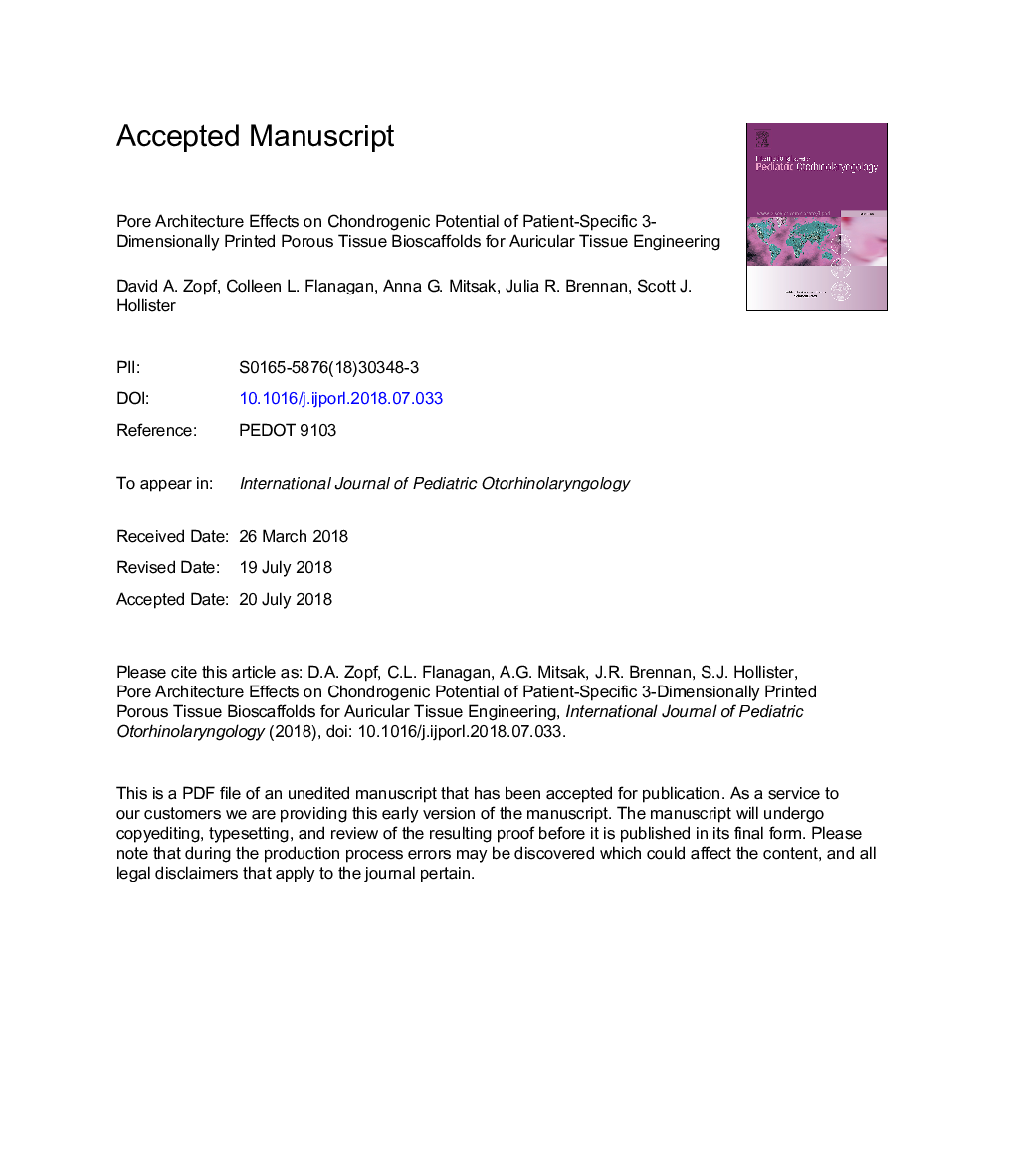| Article ID | Journal | Published Year | Pages | File Type |
|---|---|---|---|---|
| 10138165 | International Journal of Pediatric Otorhinolaryngology | 2018 | 17 Pages |
Abstract
Image-based computer-aided design and 3D printing offers an exciting new avenue for the tissue-engineered auricle. In early pilot work, creation of spherical micropores within the scaffold architecture appears to impart greater chondrogenicity of the bioscaffold. This advantage could be related to differences in permeability allowing greater cell migration and nutrient flow, differences in surface area allowing different cell aggregation, or a combination of both factors. The ability to design an anatomically correct scaffold that maintains its structural integrity while also promoting auricular cartilage growth represents an important step towards clinical applicability of this new technology.
Keywords
Related Topics
Health Sciences
Medicine and Dentistry
Otorhinolaryngology and Facial Plastic Surgery
Authors
David A. Zopf, Colleen L. Flanagan, Anna G. Mitsak, Julia R. Brennan, Scott J. Hollister,
